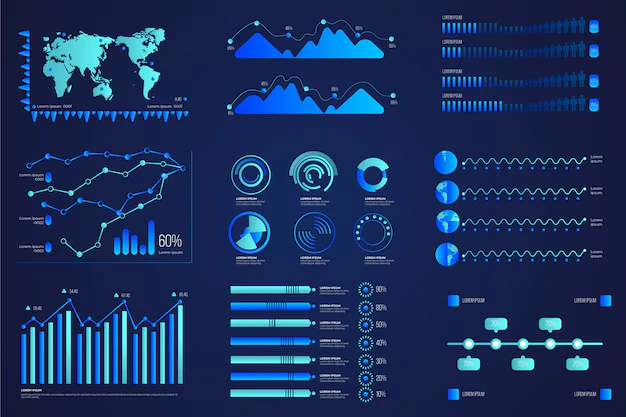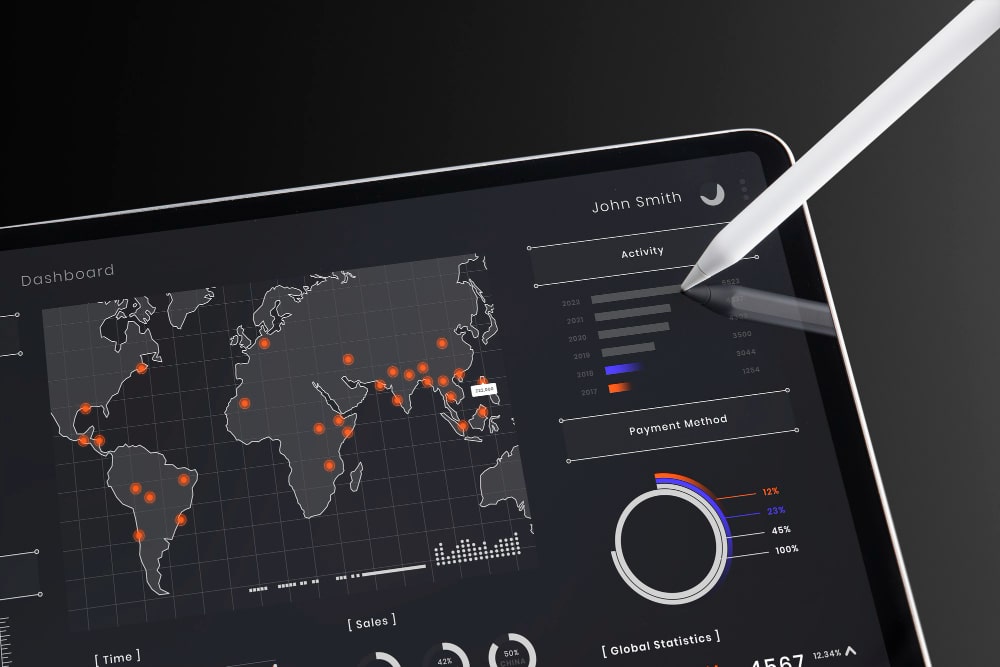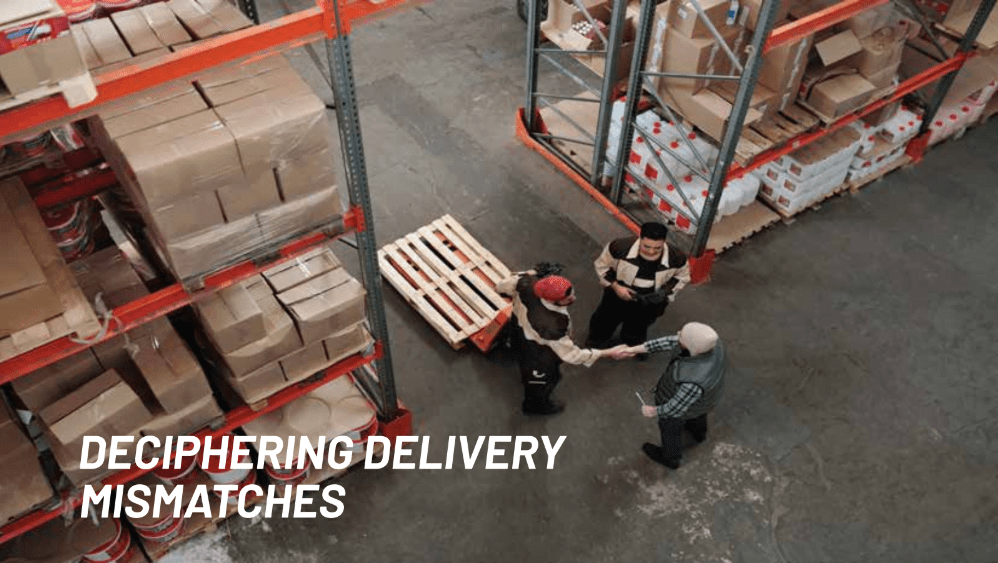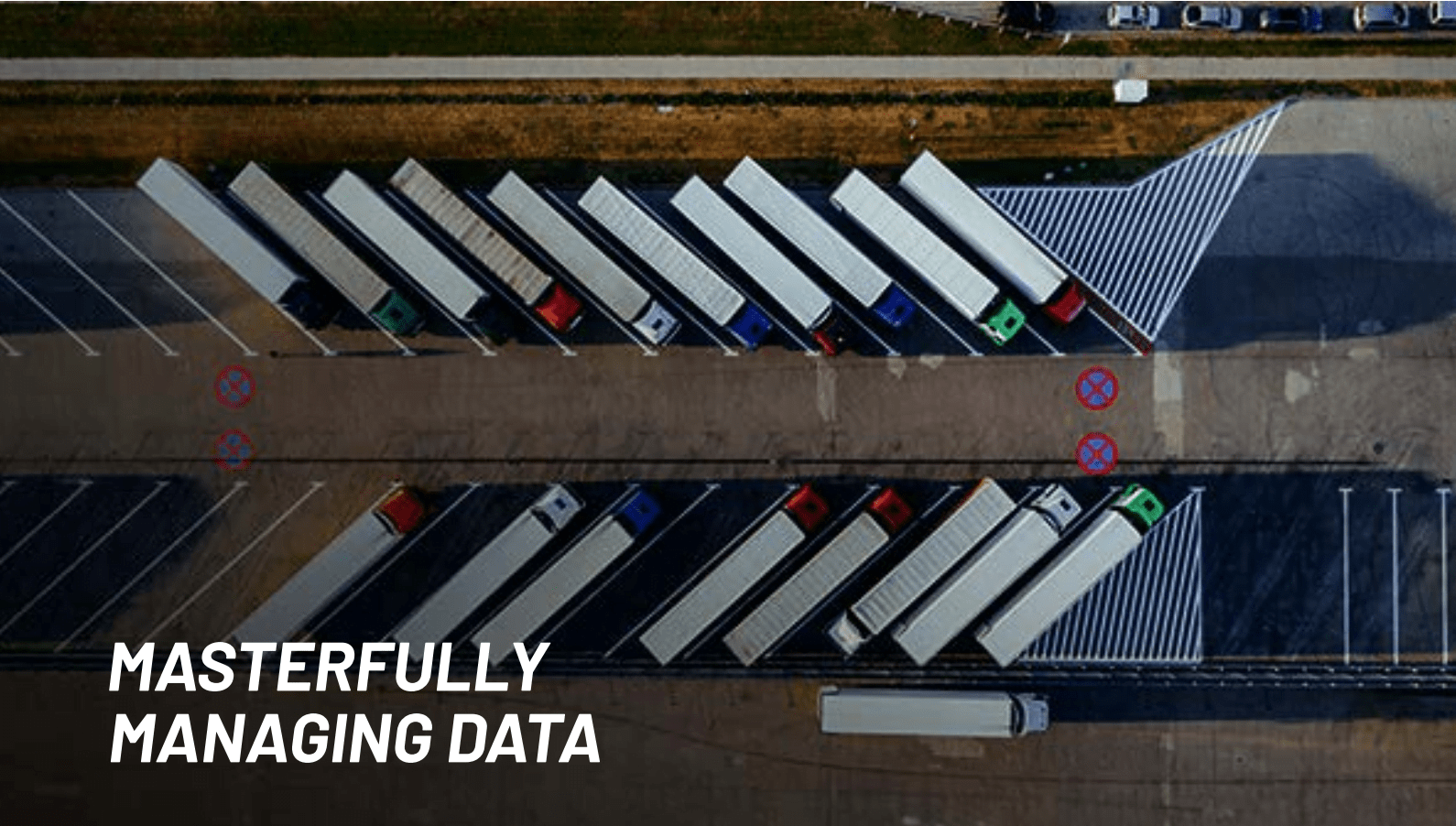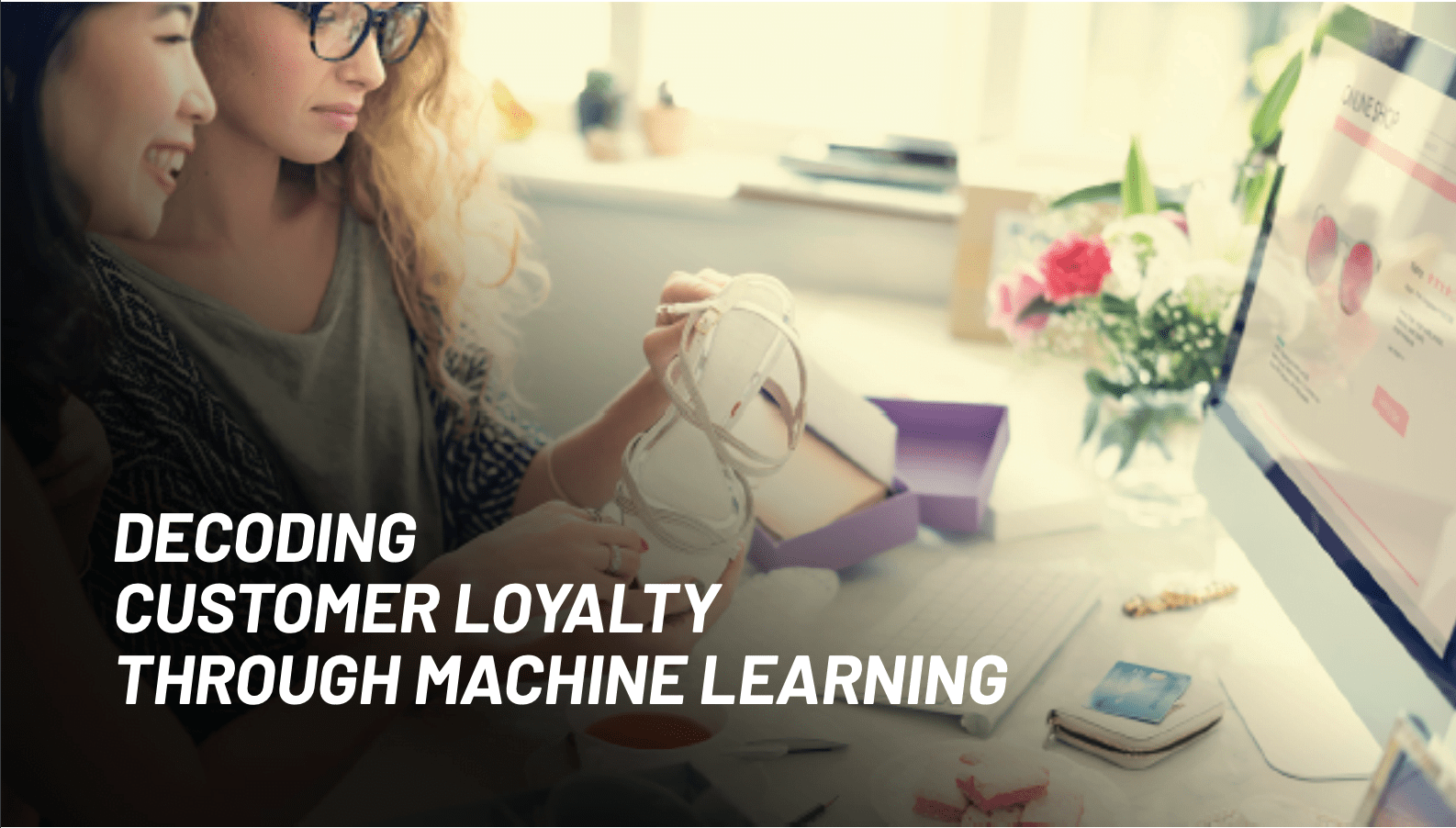December 3, 2023

The company is a leading manufacturer of textile machinery, CNC lathes and machining centers. Their Advanced Technology Centre caters to the complex requirements of the aerospace sector and their Foundry Division manufactures various highly specialized parts.
THE CHALLENGE
With data coming in from multiple systems that have evolved over a period of time, the company’s management and key business stakeholders faced several major challenges related to enterprise data availability, data synchronization, need for manual data processing, lack of sufficient Business Intelligence (BI) reports etc.
The primary applications being used included Oracle Enterprise Resource Planning (ERP), Oracle Sales Cloud (a Customer Relationship Manament (CRM) system), different web applications, a custom Human Resources Management Solution (HRMS), an Industrial Internet of Things (IIoT)
solution etc.
The existing BI team took between 2 to 3 weeks to complete any business request for a new dashboard and the bulk of this time involved collating the required data. New analytics requirements were usually executed as separate projects due to the complexity of the required data collation and analytics. Few of the challenges faced were:
- Inability of the Spares and Service team to predict the demand for spares across various customers, as accurate data for end of life of various components was not available.
- The Digital Marketing team collected data from LinkedIn, Google, Facebook, Instagram, and X. However, their data was not linked to the Oracle Sales Cloud application. Without this, the team could not leverage campaigns across customers whose details were already captured in their
CRM application. - The Total Quality Management (TQM) team utilized data which was scattered across different systems. Manually compiling and presenting this information for their monthly review meetings took between 2 to 4 days for each department. Also, the team needed several other Key
Performance Indicators (KPIs) to be tracked.
To address the data availability challenges, the company planned an initiative to implement a Data Management, Analytics and Business Intelligence solution platform. To achieve this, Prescience Decision Solutions, a Movate company proposed a methodology to develop a comprehensive data platform starting with a consulting assignment to:
- Develop a data strategy and enterprise architecture
- Perform a cloud platform comparison for implementation of the above-mentioned data platform and make recommendations on the best fit for the company.
- Define a portfolio of data executive actions to implement this new data strategy.
- Create wireframes for a few business use cases for easier visualization of the end state to key business stakeholders.
THE SOLUTION
The team of data architects and business analysts from Prescience Decision Solutions, a Movate company recommended a 4-week engagement to address these distinct requirements. At the start of the project, the team provided the company with the overall schedule, activities, timelines, and deliverables for the different sets of workshops to be conducted with the company’s business and IT users.

For the data strategy and enterprise architecture, after conducting the initial workshops, our team submitted the overall Conceptual and Logical Architecture of the required solution. In addition to this, they provided the Technical Architecture across Amazon Web Services (AWS), Microsoft Azure and Google Cloud Platform (GCP) with all the corresponding components for the end-to-end enterprise solution.
For the cloud platform comparison, our team submitted a detailed assessment report of AWS, Azure and GCP. This report contained a feature wise comparison of the tools across 13 different parameters with the corresponding scoring for each. It also included a license cost breakup of the top 2 tools along with the pricing details for the first 24 months of the engagement. In addition to this, the report also compared the visualization tools Amazon QuickSight, Microsoft PowerBI, and Tableau with the scoring across 7 different parameters.
For the portfolio of data executive actions, our team identified a set of 37 different activities across the IT infrastructure, data management and business domains. The consolidated final report contained a data executive action roadmap for the next 12 months. This included a Pilot phase which would be 1 month long, followed by 3 separate phases over the remainder of the year. Each of these subsequent phases would separately deliver 50 KPIs each to the business users through revamped reports and new BI reports.
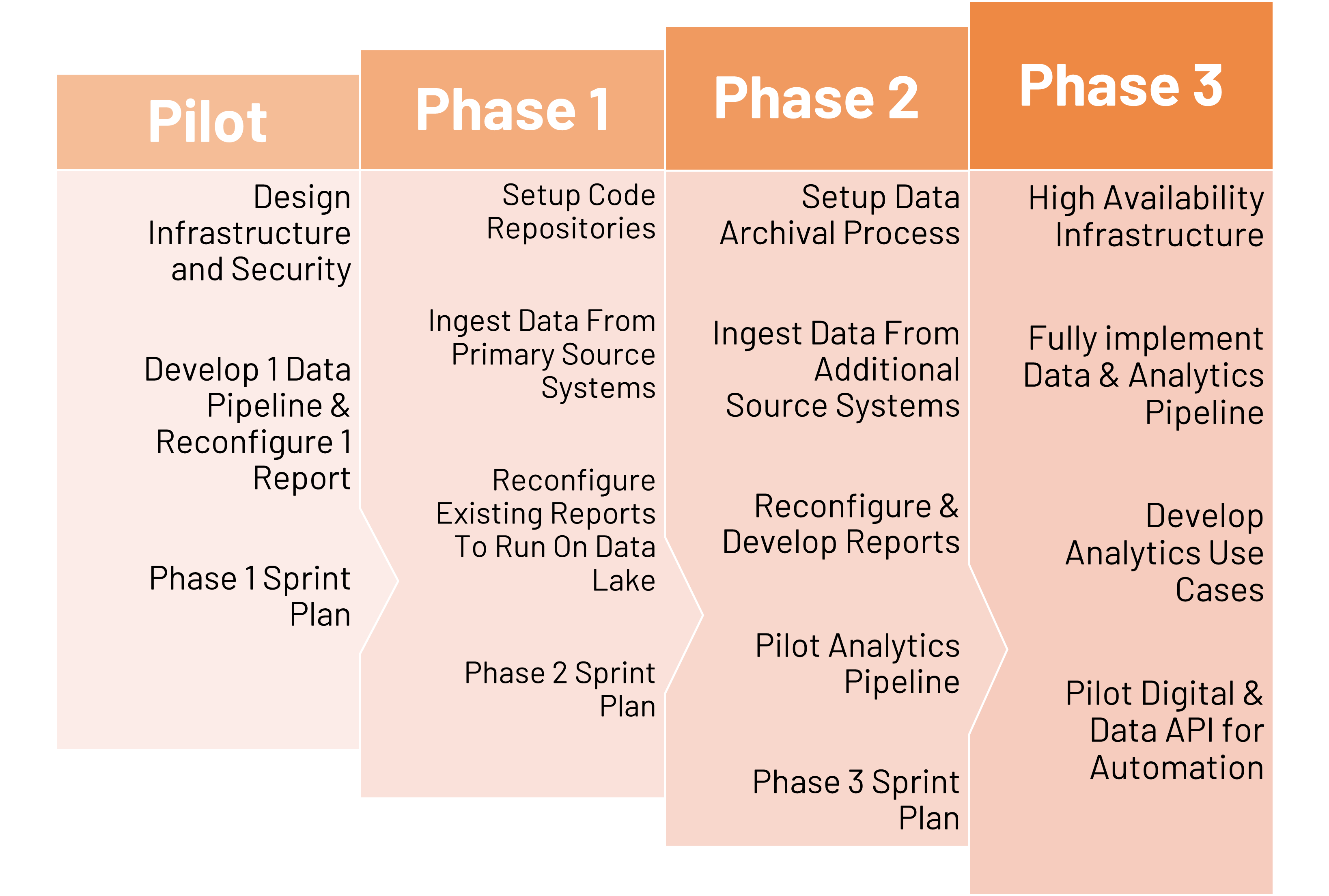
The overall project was scheduled over 3 phases, so that business benefits can be realized early in the implementation lifecycle, while building the Data platform in an incremental manner using the Agile delivery model. Each of the phases includes:
- Foundational data platform components like Data marts and BI solutions.
- Provision for ad hoc analytics
- Advanced analytics use cases
Our team developed a few wireframes across multiple tools to demonstrate:
- The art of the possible and a
- Feature comparison across different visualization tools.
THE IMPACT
The overall reports submitted to the company contained all the details related to the overall data strategy, enterprise architecture, tool recommendations, detailed roadmap, and wireframes. This gave the company a future-proof data infrastructure which was capable of handling all the diverse identified use cases, as well as potential future requirements. Based on these deliverables, the company can benefit from much faster decision-making fully based on existing data and promote the adoption of self-service reporting. The architecture can also accommodate the influx of data anticipated from the various Industry 4.0 initiatives that are being undertaken.
The portfolio of data actions and the implementation plan in a phased manner provided a clear path for the implementation.
During the engagement, the team discovered over 60 new reporting KPIs across various departments. In addition to this, they also identified 9 analytics opportunities and recommended 8 different digitization and automation opportunities. The team from Prescience Decision Solutions, a Movate company also proposed various new business opportunities for the company, which would require fresh design thinking. This provided the IT team with valuable inputs towards creating the appropriate business case for the Data platform implementation.














